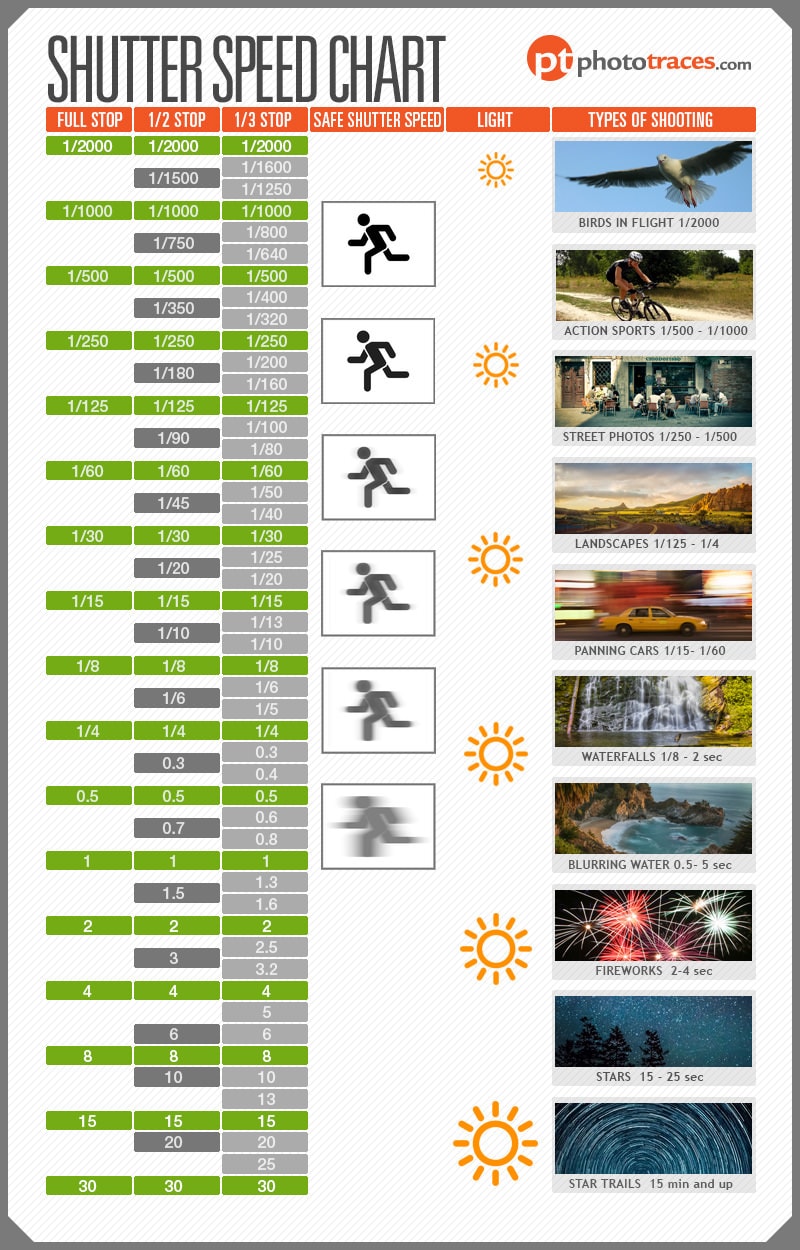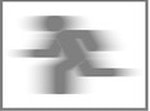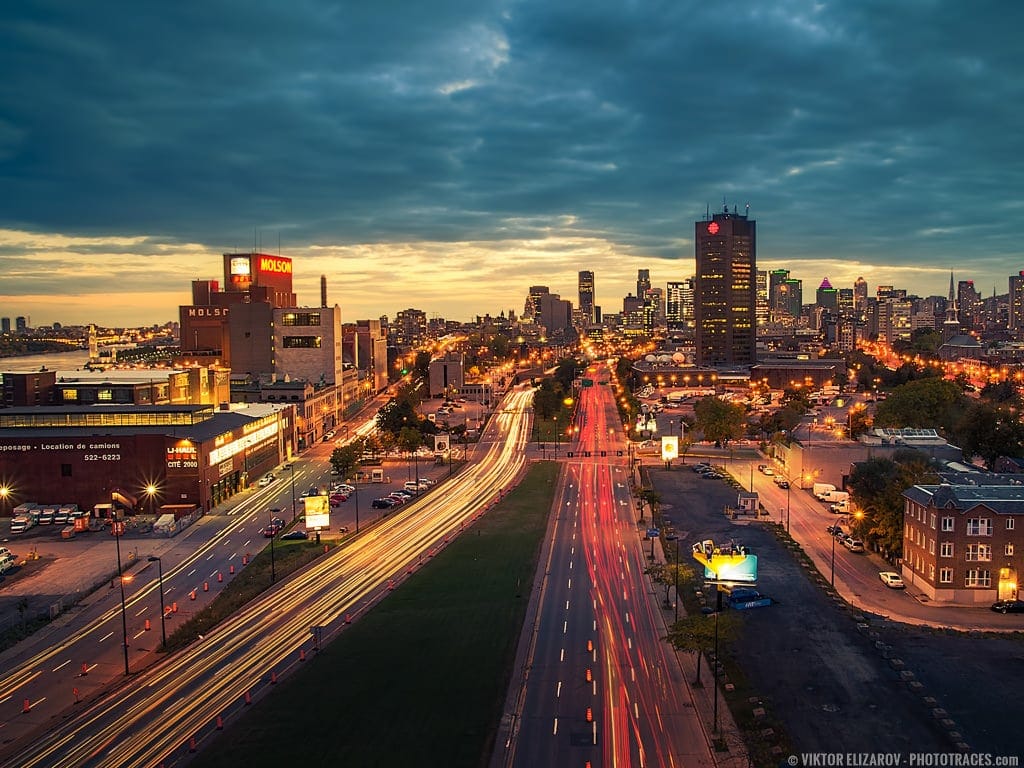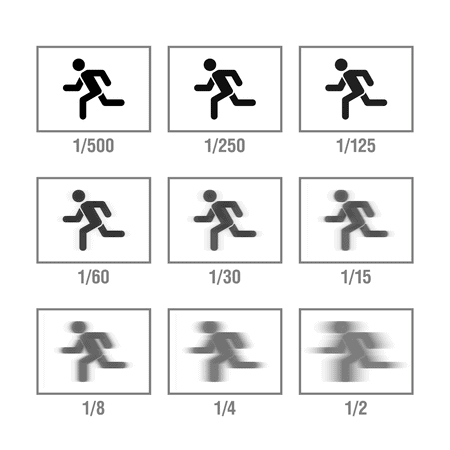The “Shutter Speed Chart” is a tool or cheat sheet designed to help photographers understand and use shutter speed effectively for various shooting scenarios. By understanding the patterns and principles laid out on the chart, you will unlock new creative avenues in your photography journey.
Shutter Speed Chart Infographic
As we explore the world of photography, we understand the important role that Shutter Speed plays in achieving proper exposure. It’s one of the essential elements of the Exposure Triangle, alongside Aperture and ISO. Together, these components establish the basis for a well-exposed photograph.
In my view, understanding and mastering Shutter Speed to produce well-exposed images is a straightforward part of this photographic formula. For me, the intriguing aspect, however, is the potential for the creative application of Shutter Speed in our photos.
By adjusting Shutter Speed values, photographers can uncover a host of creative possibilities. These subtle shifts allow us to produce interesting artistic effects, such as those seen in long exposure photography, which stretches reality’s limits.
This brings us to another invaluable tool: the Shutter Speed Chart. As a handy cheat sheet infographic, it serves as a visual guide that enhances your understanding of Shutter Speed details and nuances.

When using the Shutter Speed Chart, you will begin to appreciate how Shutter Speed exerts its influence on your photography. Its utility extends beyond achieving the desired exposure; it transforms into a dynamic tool for controlling motion within your images. With the Shutter Speed Chart at your disposal, you can thoroughly explore the various aspects of Shutter Speed.
Let’s break down the main components of the Shutter Speed Chart.
Full Stop, 1/2 Stop, 1/3 Stop
Shutter Speed, in conjunction with Aperture and ISO, is a vital controller of exposure. For a substantial period, understanding its application was relatively simple and direct:

Doubling or halving the Shutter Speed alters the exposure value by a factor of 2 or 1-stop.
For instance, adjusting the shutter speed from 1/200s to 1/100s doubles the amount of light reaching the film or sensor (1 stop). Essentially, if you keep the shutter open twice as long, you receive twice the amount of light. Alternatively, if you shift the shutter speed from 1/200s to 1/400s, you decrease the exposure by a factor of 2.
The advent of digital cameras introduced more flexibility. We’re no longer restricted to adjusting the shutter speed by one stop alone. Some cameras permit us to change the shutter speed by a half-stop (1/2 stop) and others by a third-stop (1/3 stop).
A half-stop (1/2) change in shutter speed alters exposure by 50%, whereas a one-third-stop (1/3) adjustment changes exposure by approximately 33%.
The shutter speed chart remains a helpful tool for estimating and calculating exposure more efficiently.
Save Shutter Speed

The term “Safe Shutter Speed” typically refers to the minimum shutter speed required to shoot a sharp, blur-free image when using a camera handheld, without a tripod. This speed is deemed safe as it prevents the motion blur that can result from camera shake when shutter speed is insufficient.
Several factors can influence the exact safe shutter speed, such as lens focal length, the photographer’s steadiness, and the subject’s movement. Generally, a widely accepted practice is to employ a shutter speed at least double the reciprocal of the lens’s focal length. For instance, using a 50mm lens might require a safe shutter speed of 1/100s or faster to prevent camera shake and maintain image sharpness.
Capturing moving objects in your frame demands particular attention to shutter speed, critical for achieving sharp photos. The visual aid of a Safe Shutter Speed chart reveals that using a shutter speed slower than 1/100s might push us into a potentially risky zone regarding our sharp photo objective.
Light (Exposure)

This is a simple illustration of the correlation between shutter speed values and the amount the light that reaches the camera sensor. It’s a fundamental concept that can significantly influence the exposure level in your photos.
In the context of exposure, shutter speed is a critical factor. The relationship is straightforward: faster shutter speeds, indicated by a larger denominator (e.g., 1/1000 seconds), allow only a brief moment for light to enter the sensor, resulting in less light (lower exposure) being captured.
Conversely, slower shutter speeds, represented by a smaller denominator (e.g., 1/30 seconds), extend the duration of exposure, allowing more light to be collected by the sensor.
The mastery of this relationship between shutter speed and light is the essence of exposure control in photography.
Shutter Speed Chart and Types of Shooting
This is what I call a Shutter Speed Chart Cheat Sheet that helps photographers use a shutter speed as a creative tool.
You use the fast shutter speed when you need to freeze fast-moving subjects or maintain clarity in well-lit conditions.
Slower Shutter Speed is useful in scenarios where you wish to convey motion, create mesmerizing long-exposure effects, or capture well-exposed images in low-light settings.
Birds in Flight 1/2000s

When wildlife photographers track and photograph a bird in flight it requires an extreme shutter speed of 1/2000s to get the bird perfectly sharp. The variation of this technique is to reduce the shutter speed to 1/400s will result in a sharp body of the bird but blurry wings. This is a more creative approach to wildlife photography.
Action Sports 1/500s – 1/1000s

You probably do not need a fast shutter speed when photographing a golfer putting on the green but any sports that involve fast movements and actions will need special attention to shutter speed value. Photographing professional football game or your kids playing soccer will require shutter speed between 1/500s and 1/1000 to freeze the action and to get sharp photos.
Street Photography 1/250s – 1/500s

In general, when photographing the streets the scene is in constant movement. You have people walking towards you or crossing the street, cars moving and stopping, the proper shutter speed is paramount not only for getting the right exposure but also for avoiding blurry or soft images.
Landscapes 1/125s -1/4s

It is hard to pinpoint the shutter speed range for the landscapes because the techniques and the setting you use will vary depending on if you shoot hand-held or on a tripod. The slower shutter speed of 1/8 or 1/4 is totally acceptable when using a tripod but if you shoot hand-held you need to reduce the value to get sharp photos.
Panning Cars 1/15s – 1/60s

The panning is one of the most interesting creative technique that involves the shutter speed. By using a longer shutter speed (1/15 -1/60) and tracking the moving object (car) when the shutter is open let us create the effect when the main object is in focus and the environment around it is blurred.
Waterfalls or Fast Running Water 1/8 – 2sec

Here we are entering a more creative approach to photography in general and shutter speed in particular. By photographing a fast running water with the longer shutter speed allows us to create the visual effect which does not exist in real life. It is like creating a special effect in movies. You open up the shutter speed for a longer period of time and let moving water to create motion blur effect.
Blurring Water 0.5 – 5 sec

Blurring the water is the foundation of landscape photography. Nothing makes the landscapes and seascapes dreamy and fascination like long exposure effect in the water. When photographing ocean, sea, lakes, and rivers where movement in the water is not too fast or when you shoot from a greater distance, you need a slower shutter speed value compared to shooting the waterfalls to get this silky and smooth effect in the water.
Fireworks 2-4 sec

It is not easy to photograph fireworks. You are shooting at night with bright lights popping up randomly everywhere. The logic here is to open the shutter speed long enough to capture the entire lifespan of the shoot. You use a faster shutter speed and you will get a tiny unimpressive light in the vastness of the dark sky and if you use too long value you will achieve the overexposed, blurry, and unnatural effect. I find that the speed of 3-4sec works the best.
Stars (Astrophotography) 15-25 sec

Shooting the stars or astrophotography allows us to capture something that is not visible by the naked eye. Opening the shutter speed for a long period of time helps us to amplify the dim lights of the stars.
Here you need to strike the right balance. If you use a fast shutter speed the stars will be tiny and dim but if you use a speed longer than 30sec you get a strat trail effect created by the constant movement of the earth. So the shutter value between 15 and 25 sec will produce sharp and bright stars.
Star Trails 15 min and up

This technique enables us to take advantage of the steadily spinning earth around its axis. If you open the shutter speed long enough you can capture the trailing effect of the stars. The traditional technique requires a shutter speed value of 15 minutes or longer. But with the digital workflow you can simulate the same trailing effect by taking a series of photos, let’s say 120 of them, with 30-second exposure and blending them in Photoshop or another editing program. You will be able to create the effect of 60 minutes of exposure.
Shutter Speed Fundamentals
Shutter speed is part of the exposure triangle along with aperture and ISO. Shutter speed doesn’t only control the exposure but also lets the creative photographer to innovate and experiment with the motion. When understood to the core, shutter speed is not a technical but a creative tool.
The Shutter as an Essential Part of the Camera
The shutter is the part of the camera that remains closed to prevent light from entering and reaching (exposing) the sensor. When the shutter button is pressed, the shutter curtain opens to let light reach the sensor. The sensor records the intensity of light while the shutter is open; this is how the image gets captured.
Definition of Shutter Speed
Shutter speed is defined as the time duration between the opening and closing of the camera shutter. It is the time that the sensor or film records the light and, hence, creates a photograph.
How Shutter Speed is Measured
In most cases, shutter speed is measured in fractions of seconds. However, some long exposure images require a shutter speed of up to 30 seconds or longer.
Shutter speed is usually measured as follows:
1/2000s, 1/1000s, 1/500s, 1/250s, 1/125s, 1/60s, 1/30s, and so on.
Each stop down the line (from 1/60s to 1/30s, for example) increases the duration of time the shutter stays open by a factor of two and, as a result, doubles the amount of light that reaches the camera sensor.

The Shake Blur
Often times, shake blur happens due to shake or movement in the camera while the shutter is still open. It can be avoided by using a tripod with a remote shutter release/timer or the minimum shutter speed rule. If you ever wondered why your photos appear blurry or soft, it is because of those slight movements while the shutter was open.
The Minimum Shutter Speed Rule for Shake-Free Photos
When not using a tripod or another type of support, photos tend to have ‘shake blur’ if the shutter speed falls below a particular number. This has been calculated and is given as:
1/focal length or 1/100, whichever is faster
Therefore, if you are using a full-frame camera with an 85mm lens, the minimum shutter speed you need to keep is 1/100 (because 1/100 is faster than 1/85). However, if you are using the same camera with a 300mm lens, the minimum shutter speed is 1/300s.
On a crop frame sensor, multiply it with the crop factor. For example, an APS-C sensor camera with the same 85mm requires that you use a minimum shutter speed of 1/(85 x 1.5) = 1/127.5. Here, you will use 1/150 and not 1/125 to avoid any chance of shake.
If your lens has an image stabilization feature, you can reduce it by that many stops from the minimum shutter speed. For example, if you have to use a minimum shutter speed of 1/125, but your lens has a 1 stop IS, you can use a shutter speed of 1/60.

Freeze the Moment or Faster Shutter Speeds
Faster shutter speeds tend to freeze the moment, which is commonly used for wildlife photography and water splash photography among many others. A bird in flight may require you to shoot at 1/2000s or faster. Freezing the motion of water may require you to shoot at 1/1000s or faster depending on the flow of water. This technique is also used in action shots.

For example, freezing the motion during racing events can produce tack sharp pictures with tiny bits of dirt frozen mid-air as they splatter across the tires.
Creative Motion Blur or Slower Shutter Speeds
Slower shutter speeds tend to produce motion blur. This is achieved by keeping a major part of the subject, or at least some part of subject, still while the moving parts are naturally blurred in motion. This technique is common in shooting light trails and creative dance movements. Star trail photography is based on the motion blur of the stars and their movement.
Shooting landscapes that feature water also involves blurring the motion to make the water appear silky smooth. Many photographers do this when shooting waterfalls to imitate the style used in paintings.
When using extended exposure times, this is commonly known as long exposure photography. Star trails, nightscapes, and Milky Way photography are grouped in this category. Typically, the shutter speed is very slow, which makes it impossible to shoot without a sturdy support like a tripod.

Setting the Shutter Speed – Two Major Modes
Shutter priority mode lets you set the shutter speed while the camera automatically sets the aperture based on the light conditions, metering mode, exposure compensation, and locked-in ISO settings. In manual mode, all the settings are completely manual including the shutter speed and aperture; metering only offers a guideline for the correct exposure.
Where Can You Find the Shutter Speed?
The shutter speed can be found on the bottom left of the viewfinder screen or on the top of the camera’s LCD panel (not all cameras have this feature). Also, you can find the settings displayed on the camera’s rear LCD screen. Shutter speed is usually denoted as a number instead of fractions. For example, 1/125 is denoted as 125, and 1 second is denoted as 1. However, this convention has changed in a few recent camera models.
Shutter Speed Chart | Final Thoughts
The Shutter Speed Chart is the key to understanding how shutter speed brings life into your images. It controls image flow, enabling you to freeze the action, produce a creative blur, or even stack star trails, essentially acting as the fuel that propels your creativity. Crucially, timing your shutter button press correctly in coordination with the appropriate camera settings can result in stunning photographs.
The Shutter Speed Chart is your guide to fully harnessing the power of shutter speed, reinforcing your ability to create remarkable, well-composed shots that truly encapsulate your vision.

